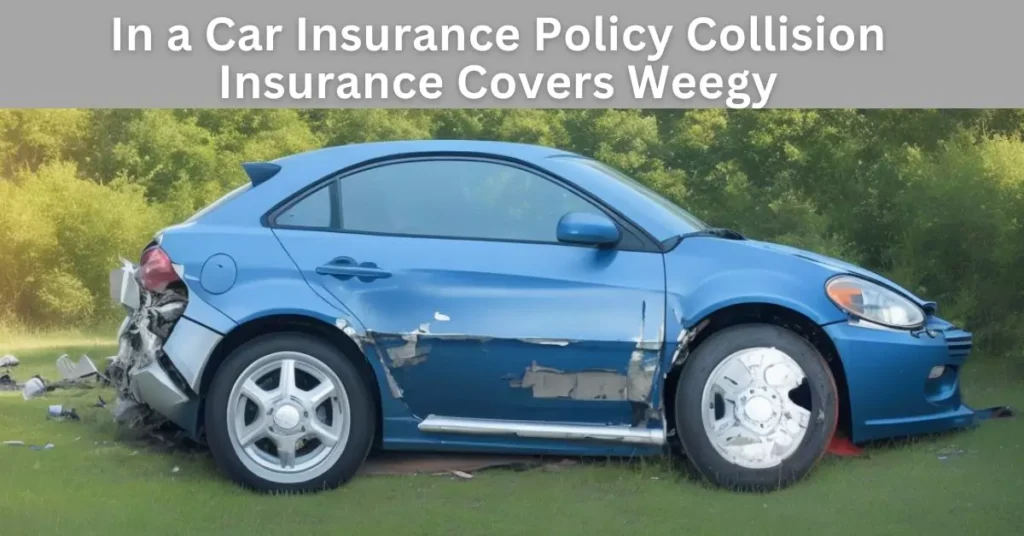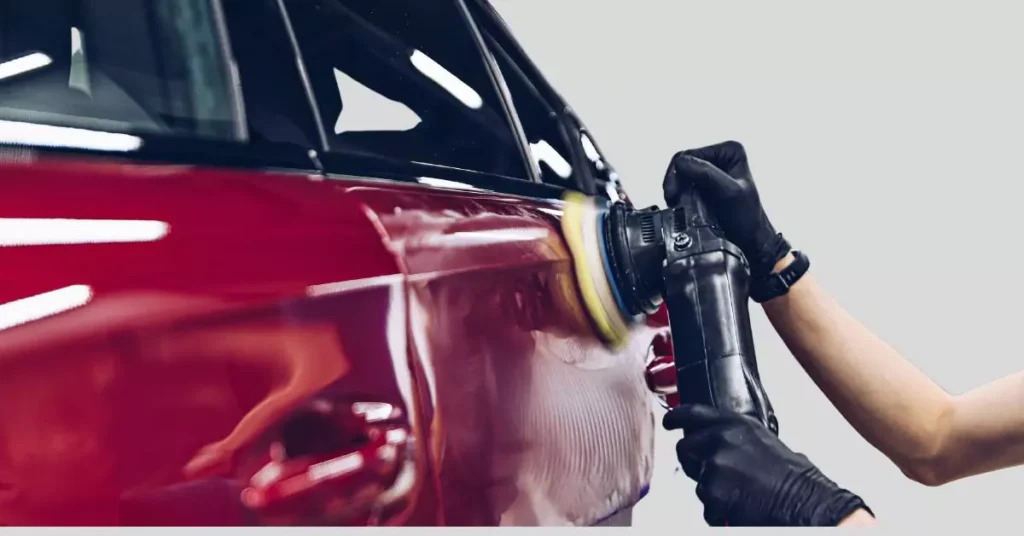It was 8:03 AM when Mia’s minivan met the black ice. The sickening crunch of metal against guardrail echoed through the Colorado canyon. As she sat trembling in the tow truck hours later, one thought cut through her panic: “Will insurance cover this?” Her mind raced through the fine print of her policy- that document she’d skimmed once and filed away. Like millions of drivers, Mia discovered too late that not all car insurance is created equal. When the dust settled, her collision coverage became the financial lifeline that saved her family from ruin.

Contents Skip Ahead
- 1 What Exactly Does Collision Insurance Cover?
- 2 What Collision Insurance Doesn’t Cover
- 3 Collision vs. Comprehensive: The Critical Differences
- 4 When Collision Insurance Becomes Non-Negotiable
- 5 The Deductible Dilemma: Choosing Your Financial Threshold
- 6 State-Specific Nuances You Can’t Ignore
- 7 The Claims Process Demystified: A Step- by-Step Guide
- 8 Cost-Cutting Strategies That Don’t Compromise Protection
- 9 The Total Loss Tipping Point
- 10 Frequently Asked Questions
- 11 The Final Word: Peace of Mind Has a Price Tag
What Exactly Does Collision Insurance Cover?
Collision insurance protects your vehicle when impact forces cause direct damage, regardless of fault. Unlike state-mandated liability coverage (which pays for others’ damages), collision insurance focuses solely on repairing or replacing your car. According to 2025 IIHS data, the average collision claim now exceeds $6,200—a cost few can absorb unexpectedly.
Covered Scenarios:
- Colliding with stationary objects: Telephone poles, mailboxes, guardrails, or potholes (yes, potholes count!)
- Vehicle-to-vehicle accidents: Including hit-and-runs and at-fault crashes
- Rollovers: Single-vehicle loss-of-control incidents
- Uninsured driver incidents: When the at-fault party lacks adequate coverage
Real-life example: When Mark’s Tesla swerved into a ditch during a hailstorm, his $2,500 collision deductible saved him from $18,000 in repair bills. His comprehensive coverage then handled the hail damage—a perfect illustration of how these coverages work in tandem.
What Collision Insurance Doesn’t Cover
Critical gaps every driver should know:
- Damage to other vehicles (liability insurance handles this)
- Medical bills (see PIP or MedPay coverage)
- Non-collision events like theft, fire, or animal strikes (comprehensive territory)
- Rental car costs (requires separate rental reimbursement)
Insurance expert tip: “Think of collision as ‘impact insurance.’ If it didn’t involve forceful contact, it likely falls under comprehensive or other coverage types,” says Maria Hernandez, a 20-year auto claims veteran.
Collision vs. Comprehensive: The Critical Differences
| Event Type | Collision Coverage | Comprehensive Coverage |
|---|---|---|
| Hitting a deer | No | Yes |
| Theft | No | Yes |
| Pothole damage | Yes | No |
| Vandalism | No | Yes |
| Tree falling on car | No | Yes |
| Rear- ending another vehicle | Yes | No |
Source: III Coverage Guidelines 2025

When Collision Insurance Becomes Non-Negotiable
1. Financed or Leased Vehicles
Lenders universally require collision insurance coverage (alongside comprehensive) until you own the asset outright. Why? The 2025 Edmunds study shows 38% of new cars are totaled in accidents within 8 years of purchase—a risk banks won’t absorb.
2. Newer Vehicles (Under 5 Years Old)
With average new car prices hitting $48,510 in 2025, collision coverage is a financial safeguard. The 10% rule applies: If annual premium+ deductible < 10% of your car’s value, carry collision.
3. High- Risk Driving Environments
Urban commuters ( 35% more collision claims) and residents in no- fault states like Michigan or Florida face heightened vulnerability.
The Deductible Dilemma: Choosing Your Financial Threshold
Your deductible- the amount you pay before coverage kicks in- directly impacts premiums. Data from the National Association of Insurance Commissioners reveals:
| Deductible | Avg. Annual Premium | Best For |
|---|---|---|
| $250 | $736 | Low- cash- flow drivers |
| $500 | $642 | Most drivers ( sweet spot) |
| $1,000 | $518 | Emergency fund holders |
Pro Tip: Set your deductible at the highest amount you could comfortably pay tomorrow. This optimizes premium savings without creating repayment stress.
State-Specific Nuances You Can’t Ignore
While no state mandates collision coverage, local regulations impact your needs:
- No-fault states (12 including NY, FL, MI): Higher medical costs increase lawsuit risks- making collision protection more critical
- High uninsured driver states (OK 26%, MS 29.4%, NM 21.6%): Collision covers you when the at- fault party lacks insurance
- Rural vs. urban divide: Wyoming drivers pay 23% less for collision than those in Philadelphia due to accident frequency
The Claims Process Demystified: A Step- by-Step Guide
- Immediate Action: Document the scene with photos/video; call police if injuries or $1,000+ damage (required in 33 states)
- Claim Initiation: Contact your insurer within 24 hours—delays risk denial
- Damage Assessment: Your insurer will order an inspection (average 2.7 days in 2025)
- Repair Authorization: Use preferred shops for warranty protection
- Payment: Deductible due upon vehicle pickup; insurer pays balance directly to shop
“The customers who photograph damage before moving vehicles get 17% faster settlements,” notes claims adjuster David Chen.
Cost-Cutting Strategies That Don’t Compromise Protection
- Bundle policies: Save up to 25% by combining home/auto with one carrier
- Leverage telematics: Usage-based programs like Progressive’s Snapshot® cut premiums 15-30% for safe drivers
- Increase credit score: A 100-point jump can reduce premiums 22% in most states
- Strategic downgrading: For cars worth <$4,000, collision often costs more than it pays
The Total Loss Tipping Point
When repair costs exceed ~75% of your car’s actual cash value (ACV), insurers declare it a total loss. In 2025, this threshold hit:
- $4,100 for a 2015 Toyota Camry
- $16,250 for a 2020 Ford F-150
Your collision coverage then pays ACV minus deductible—making GAP insurance crucial for financed vehicles.
See Also: Does My Insurance Cover Rental Car State Farm?
Frequently Asked Questions
Q: Does collision insurance cover hitting animals?
A: No—this falls under comprehensive coverage. The distinction? Collision requires avoidable contact (another car, tree), while animal strikes are considered unavoidable “acts of nature”.
Q: Is collision worth it on a 10-year-old car?
A: Only if premiums + deductible < 10% of the car’s value. For a $4,000 vehicle, drop collision if your annual cost exceeds $400 514.
Q: Who pays if the other driver is at fault?
A: Their liability coverage should cover your damages. But if they’re uninsured/underinsured, your collision coverage acts as a backup (you’ll pay deductible first, often reimbursed later).
Q: Does collision cover rental cars?
A: Generally yes, but verify your policy’s “loss of use” provisions. Daily limits often cap at $50—insufficient for premium rentals.

The Final Word: Peace of Mind Has a Price Tag
Collision insurance transforms catastrophic expenses into manageable costs. As repair complexity skyrockets—with the average EV bumper replacement now costing $6,587—this coverage has evolved from luxury to necessity for most drivers.
Before you renew your policy:
- Recalculate your car’s current value (Kelly Blue Book)
- Audit last year’s driving incidents
- Compare premiums at 3 price tiers ($500/$1,000/$1,500 deductibles)
Your vehicle isn’t just transportation—it’s your livelihood, your family’s safety, and your financial stability. Protect all three with eyes wide open.
“Insurance is the only product where you hope to never use it, but can’t afford to be without it.”
— Industry Maxim